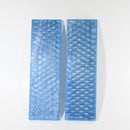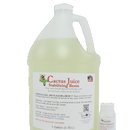Introduction: Modifying a Surface Gauge for Squareness Measuring
Few things in machining are quite as important as squareness. Problem is, how do you measure squareness? Those of you who said "hold the part up against a machinist square and see if theres light between the part and the squares blade", youre almost there, but not quite.
The most precise way of measuring squareness is in fact comparing against a known square surface, but not by eye. Instead, you need some measuring tools, and one of the easiest is a tool called a surface gauge, in conjunction with a dial test indicator. For a good explanation on how this works, check out this video, it explains better than i can:
Basically, set a dial indicator up on a surface gauge with a radiused fence on the front, set the needle on the indicator to be perfectly in line with the fence against a known square, then test the unknown part to see if it matches up to the square part. If the number shown by the indicator is different on the unknown part from its calibration to the known square, your part is out of square by that number. Simple, right?
Less simple is the surface gauge. Surface gauges themselves arent uncommon in the least, but one with the little radius doodad on the front? I havent been able to find them commercially. The fun part about having a house full of machine tools, though, is that if i cant find something i can always make it, and show someone else how to while im at it!
Step 1: Disassembly and Layout
So, the first step is to get a surface gauge. These are pretty commonly available at the standard machine tool outlets, i.e MSC, KBC, Grizzly, and the like. This one came from Grizzly because im lucky enough to live right next door to a showroom. Ran me about $20. First thing youre going to want to do is disassemble the thing until you get down to just the base of the tool. For this gauge, there was 1 screw holding the pivot mechanism to the base that i had to remove and that was it. There was also a small spring, watch out for those.
Once youve got the base on its own, time for some preliminary layout work. Now, my mill has a DRO that ill be working off of, so manual layout isnt strictly necessary, but the lines help prevent Uncle Bozo from making a visit. I applied some Dyechem to the front of the base, to help the layout lines show up better, then used a dial height gauge to scribe the outline of a 3/16 slot roughly centered on the bases height. None of the dimensions im using are super critical here, but you do want to make sure that you arent leaving one wall of the slot too thin.
Now that the slots laid out, time to take this over to the mill
Step 2: Setup and Slot Milling
Alright, now that the slot is laid out, time to make some chips. I took the base over to my mill and set it up vertical in the vise, then found the center of the piece using an edge finder and the DRO on the mill. Once everything is located, you can work on getting the tool set up to start making the cut.
Doing this, im shooting for a 3/16" wide slot thats 3/16" deep. You might be tempted to just grab a 3/16" end mill and go to town, because a 3/16 end mill should cut a 3/16" slot, right? In an ideal world, that would be how it works, but unfortunately youll probably see some deflection in the cut which results in a slot that is anything but 3/16, and here we need precision. The proper way to do this is to use an end mill narrower than the final slot width, in this case a 1/8" end mill, and step over to cut to final width. In my case, im going to make a 1/8" slot down the center of the piece to the 3/16" depth i want, then move the end mill 1/32" both forward and backwards on the Y axis (front to back). Doing that should result in a slot that measures a perfect 3/16.
So, theres the explanation, so quick refresher on the steps:
1. Set the part up vertical in the vise
2. Find center of the part in the Y axis
3. Touch off end mill to the top of the work piece
4. Dial in a .010 depth cut and feed in the X axis (left to right) to begin slotting
5. Realize that the part you thought was cast iron is actually hardened steel, break end mill
6. %$#!
Yeah, always make sure you know what youre working with BEFORE you make a cut. That was my only 1/8" end mill... Ah well. Luckily, it IS possible to mill hardened steel with a standard carbide end mill, so i set up with a 4mm solid carbide instead. This ended up changing how i had to step over to make the slot the proper width, but it still worked. Take it slow, small cuts and everything will be alright.
Step 3: Making the Radius Bumper
Fair warning, im not actually sure what this part is called...
Now, for this part, youre gonna need a tiny bit of metal, roughly 1/4" thick, 2" wide and 1" tall, but none of those dimensions are critical. You just need it to be thicker than the slot that you cut in the base, as wide as the base is and tall enough to cut a radius on the face. Im using 1/4" hot rolled mild steel here.
First step, plop that piece of steel in the vise with the long edge facing up, then make a cleanup pass so you have a flat surface to reference off of on the top. Following me so far? Good. Now that you have that reference face, drop the end mill down by the depth of the slot that you cut in the base minus about .010", and make a very small pass along the back side of the piece, leaving about a .030" lip.
Now, once you have the back side cut, youre going to want to move the endmill to the front side of the piece by a certain amount. If you havent gathered by now, what im doing here is essentially creating a tenon on this piece of steel to fit into the dado that we cut in the base in the last step, to borrow some woodworking terms. Now, the amount you need to shift the piece is going to be determined by the size of the endmill youre using and the thickness you need the tenon to be. So, im using a 1/2" end mill, i need a .1875 tenon, and we want to have some room to sneak up on the size, so add .010 to that to get .5+.1875+.01.=.6975, so im going to move the workpiece .6975" away from me, to put the end mill in front of the piece and start cutting that second face. Plug in your own numbers for the size of end mill youre using and the slot width of your piece, its important that the tenon is a snug fit in the slot. Dont try taking the full bite at once though, make small passes until you hit that number.
Once youve hit that number we calculated on your DRO/scales/whatever, you should have a lovely little tenon formed on the edge of your workpiece. Try the fit out with the slot you cut in the gauge base. You want it to be a decent press fit, you shouldnt need a hammer to get it in, but it should be pretty snug and not fall out. If the tenon is too thick and doenst fit, take a little more metal off. If the fit is too loose, start over on the face. The fit is important
Youll know youre done with the bumper tenon when you can get the tenon into the slot without needing to hammer it, but can still hold the assembly by the bumper without the gauge base falling off. You also want the shoulders of the tenon to fit directly against the face of the base, without the tenon bottoming out in the slot. If your tenon bottoms out, skim a little off the top of it
Step 4: Finishing the Bumper
Off camera i went ahead and trimmed the bumper to final width. I cut it to the same width as the gauge base, no sense in having it be wider than that after all. I also squared off the front edge, just to make holding the piece while i square up the short ends easier, and just for giggles i tossed the piece on the surface grinder to pretty it up though. Plus i needed an excuse to fire up the surface grinder.
Anyway, with the width set, time to do a little more layout. The face of the part is covered in Dyechem, red this time just because, and the radius is layed out. I just drew a guideline .5" forward from the tenon edge, then used that line to line up a mason jar lid i used to set the radius. This isnt a critical measurement, as you might have noticed, it just needs to be a smooth curve.
With the layout done, all you need to do is shape the piece to the layout line. In my case i used a bandsaw to get rid of the bulk of the material, and a belt grinder to do the rest of the shaping. You could use hacksaw, files, set up a rotary table on the milling machine, fit up a superglue chuck on the lathe, whatever, it doesnt matter so long as that front side ends up with a nice curve.
Step 5: Thats Is
Stick the bumper in the slot on the gauge base, reassemble everything on the gauge, mount a DTI and youre off to the races. Youre ready to get this calibrated against a master square and start testing other parts for squareness. Still confused as to how the process works? I recommend checking out this video from OxToolCo:
He goes into detail on how to use a gauge like this to test for squareness, as well as a pretty cool trick on how you can measure squareness without needing a pricey master square











